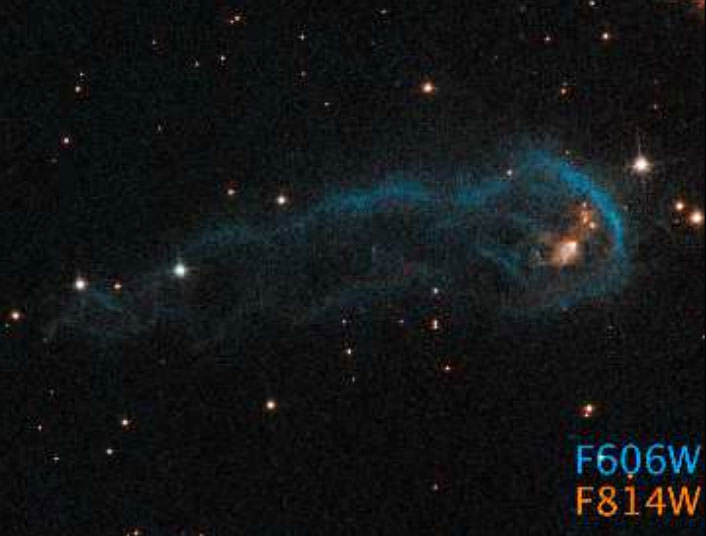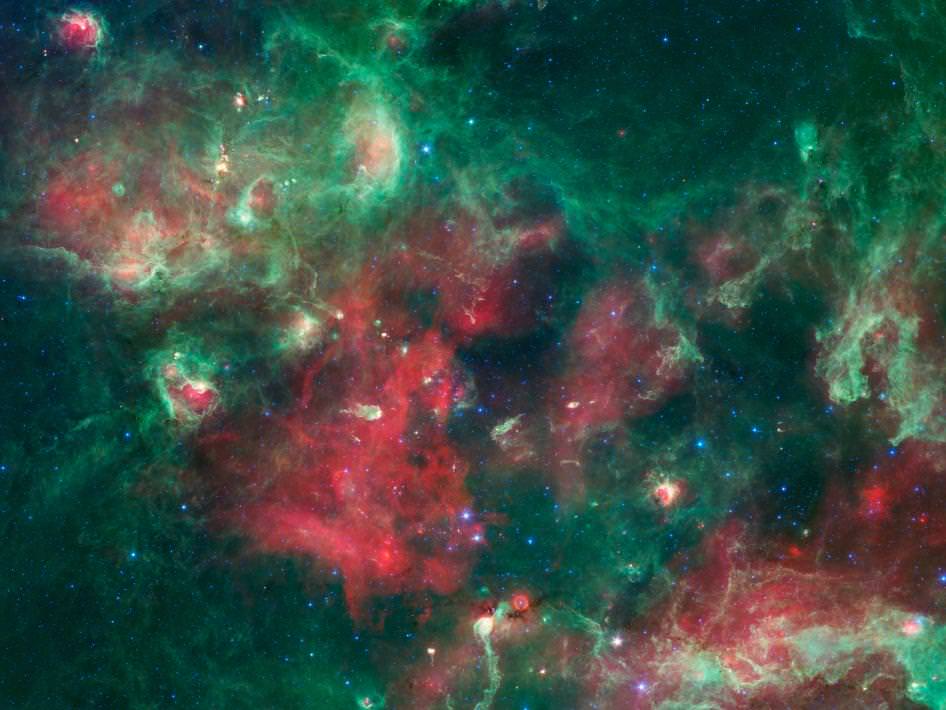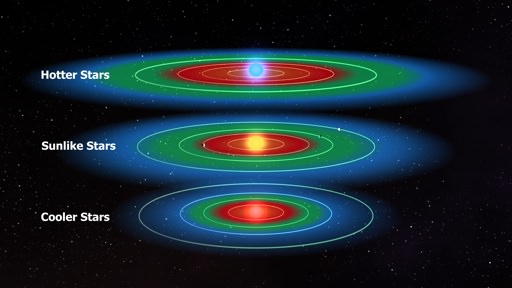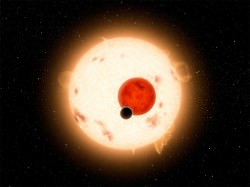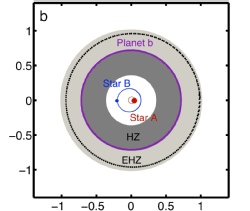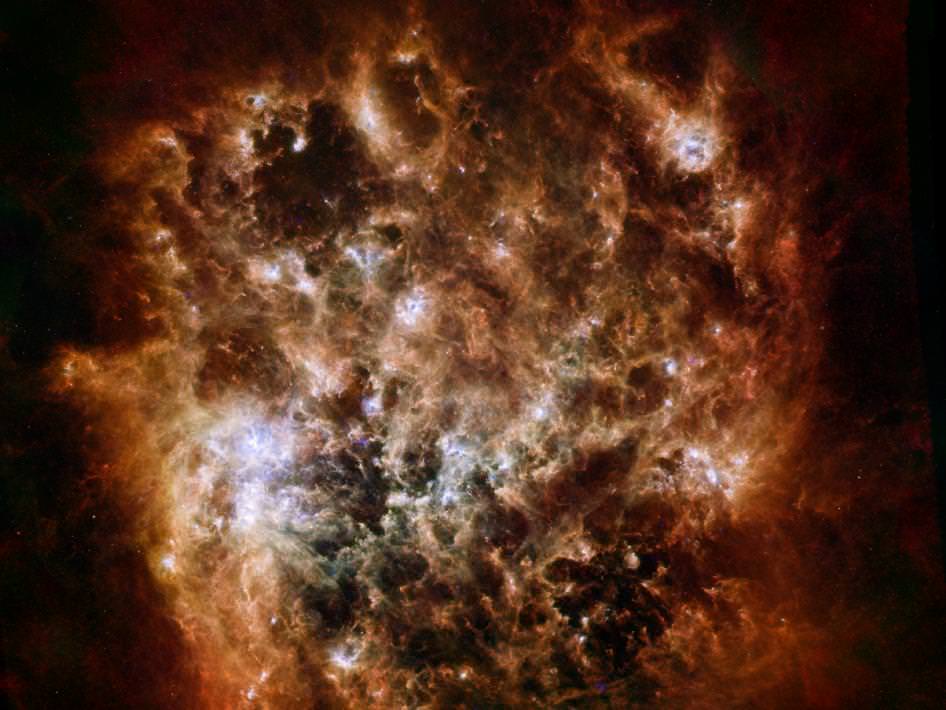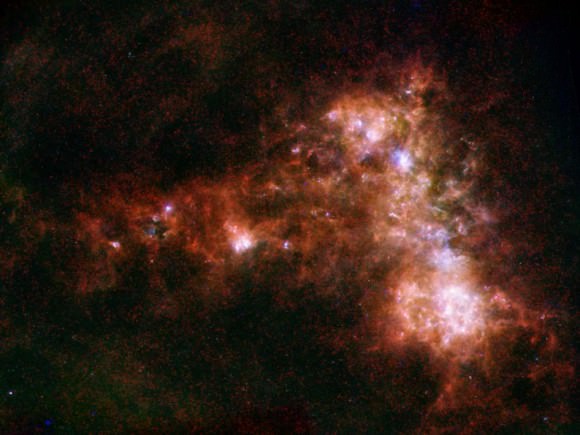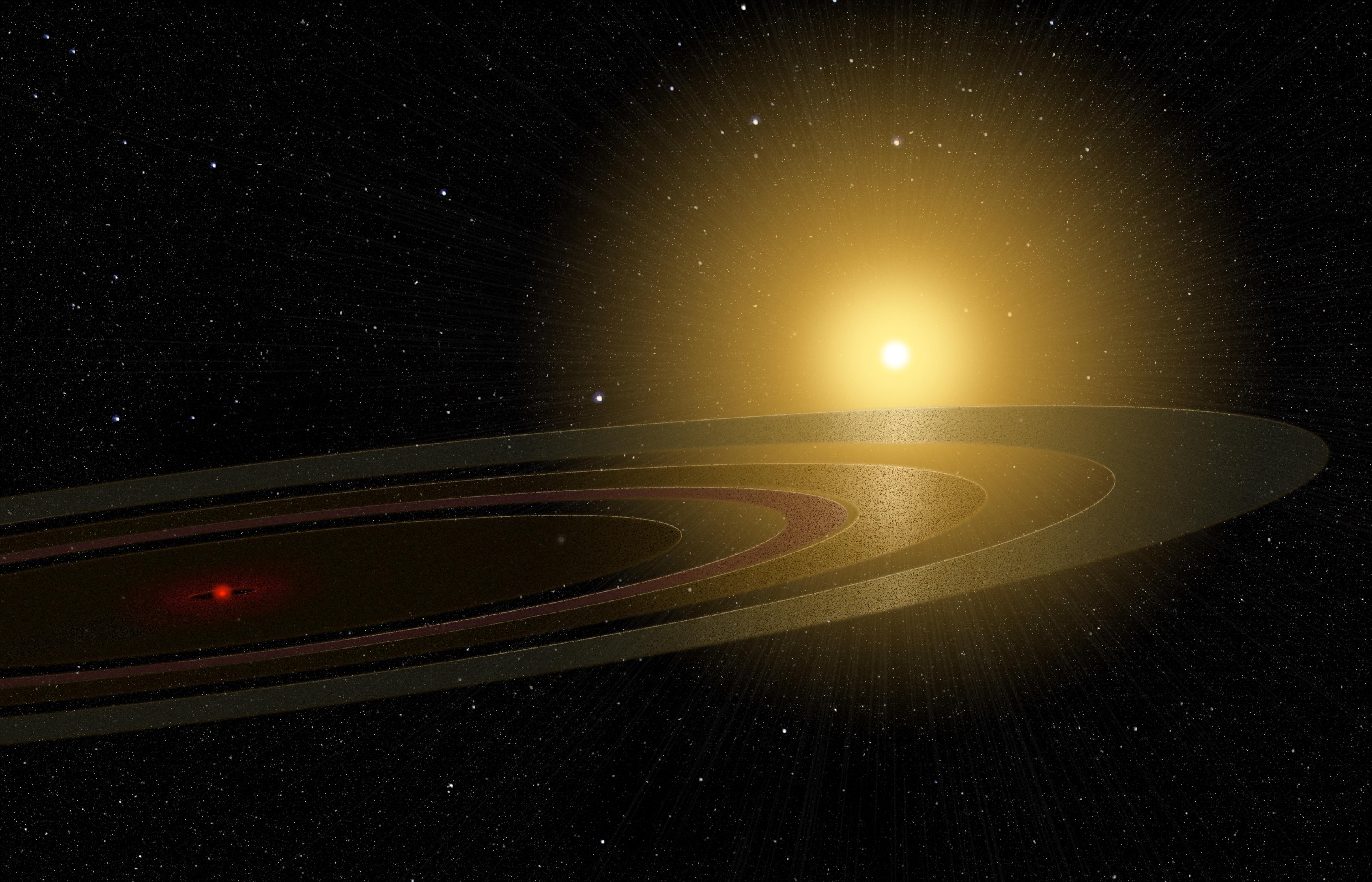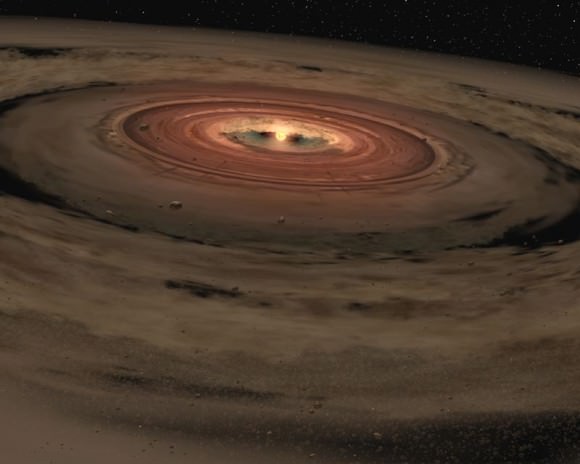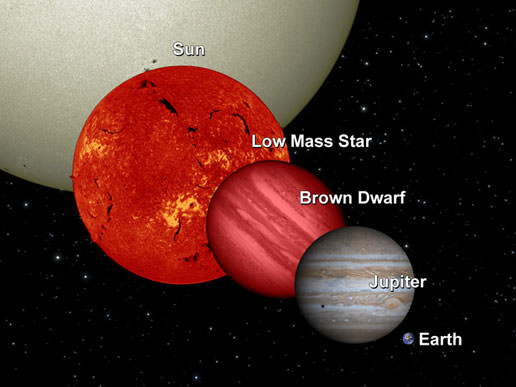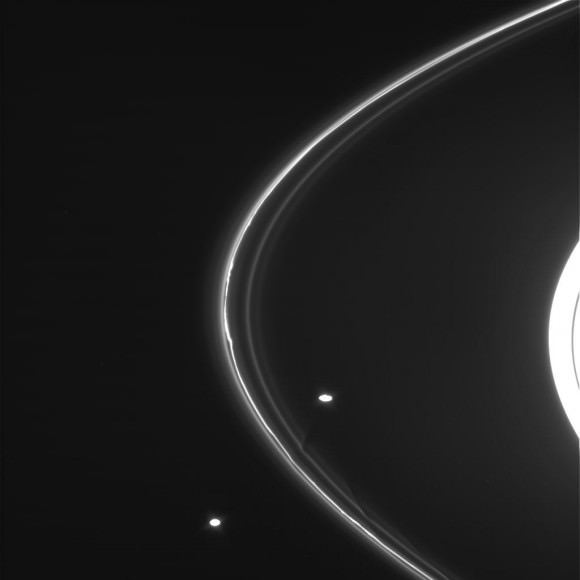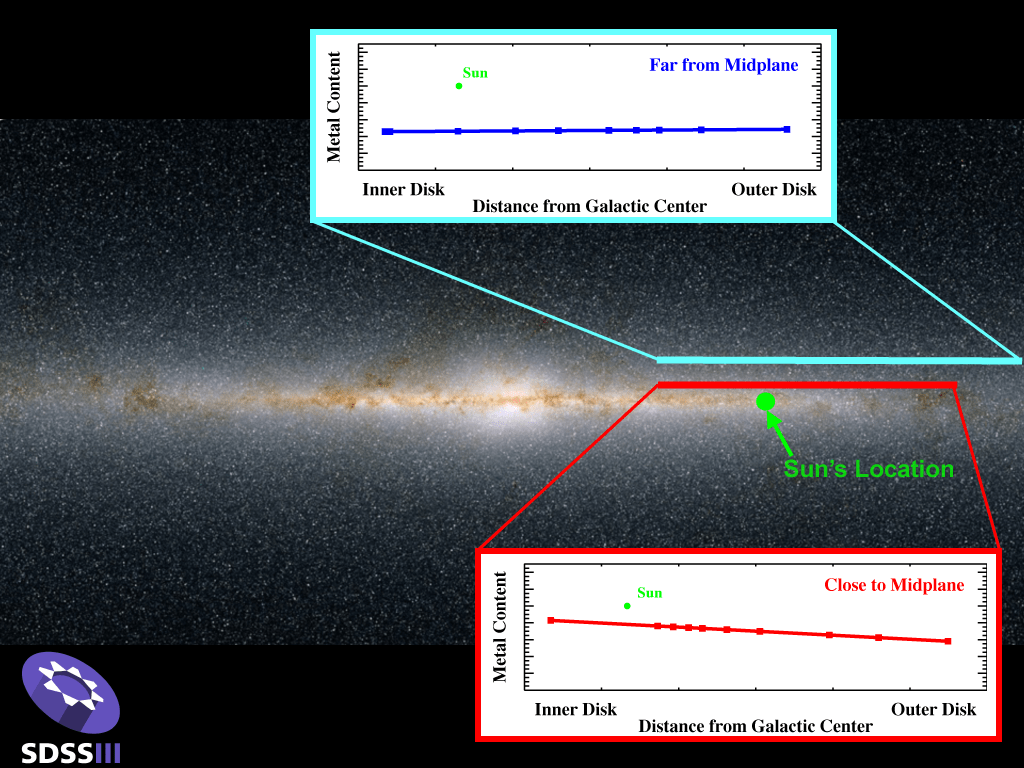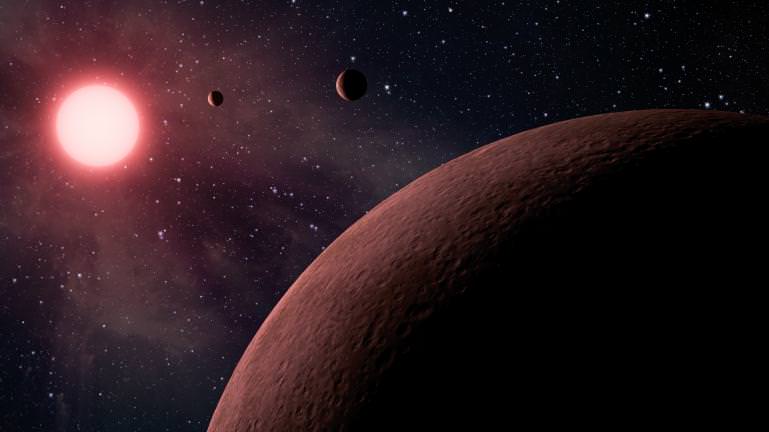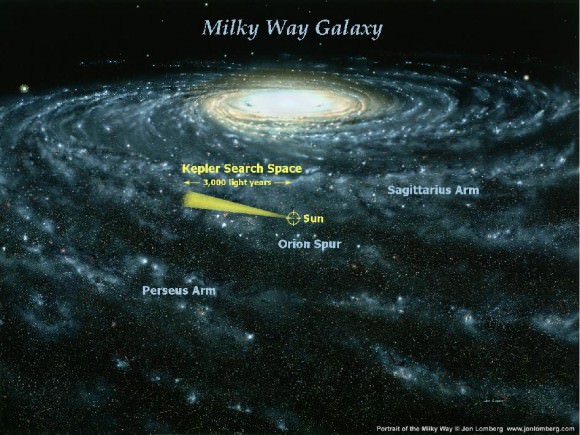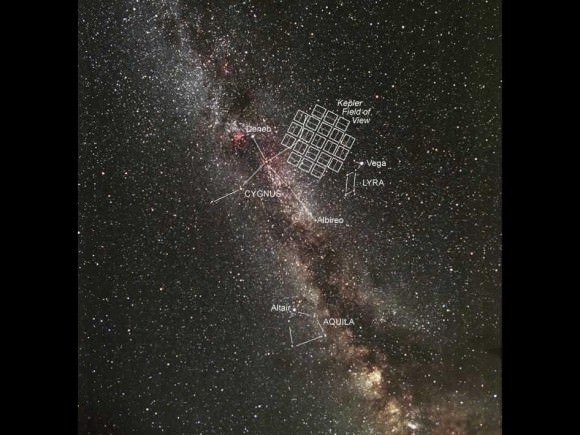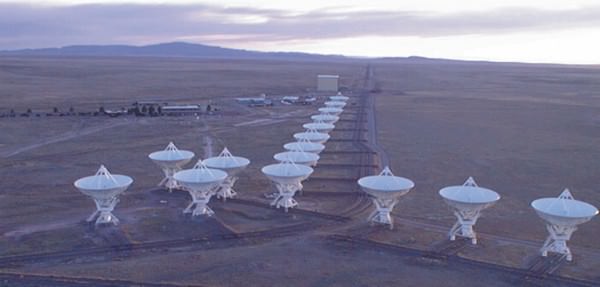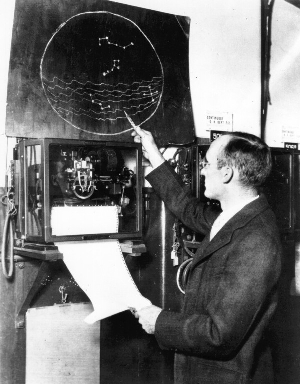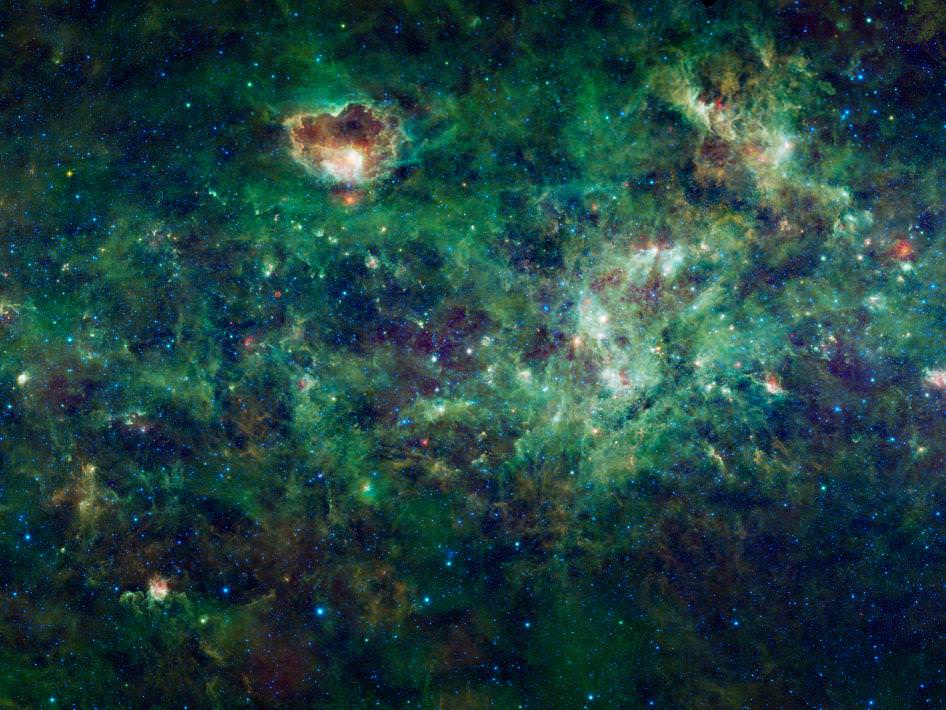[/caption]
The well known Orion Nebula is perhaps the most well known star forming regions in the sky. The four massive stars known as the trapezium illuminate the massive cloud of gas and dust busily forming into new stars providing astronomers a stunning vista to explore stellar formation and young systems. In the region are numerous “protoplanetary disks” or proplyds for short which are regions of dense gas around a newly formed star. Such disks are common around young stars and have recently been discovered in an even more massive, but less well known star forming region within our own galaxy: Cygnus OB2.
Ten times more massive than its more famous counterpart in Orion, Cygnus OB2 is a star forming region that is a portion of a larger collection of gas known as Cygnus X. The OB2 region is notable because, like the Orion nebula, it contains several exceptionally massive stars including OB2-12 which is one of the most massive and luminous stars within our own galaxy. In total the region has more than 65 O class stars, the most massive category in astronomers classification system. Yet for as bright as these stars are, Cygnus OB2 is not a popular target for amateur astronomers due to its position behind a dark obscuring cloud which blocks the majority of visible light.
But like many objects obscured in this manner, infrared and radio telescopes have been used to pierce the veil and study the region. The new study, led by Nicholas Wright at the Harvard-Smithsonian Center for Astrophysics, combines infrared and visual observations from the Hubble Space telescope. The observations revealed 10 objects similar in appearance to the Orion proplyds. The objects had long tails being blown away from the central mass due to the strong stellar winds from the central cluster similar to how proplyds in Orion point away from the trapezium. On the closer end, the objects were brightly ionized.
Yet despite the similarities, the objects may not be true proplyds. Instead, they may be regions known as “evaporating gaseous globules” or EGGs for short. The key difference between the two is whether or not a star has formed. EGGs are overdense regions within a larger nebula. Their size and density makes them resistant to the ionization and stripping that blows away the rest of the nebula. Because the interior regions are shielded from these dispersive forces, the center may collapse to form a star which is the requirement for a proplyd. So which are these?
In general, the newly discovered objects are far larger than those typically found in Orion. While Orion proplyds are nearly symmetric across an axis directed towards the central cluster, the OB2 objects have twisted tails with complex shapes. The objects are 18-113 thousand AU (1 AU = the distance between the Earth and Sun = 93 million miles = 150 million km) across making them significantly larger than the Orion proplyds and even larger than the largest known proplyds in NGC 6303.
Yet as different as they are, the current theoretical understanding of how proplyds work doesn’t put them beyond the plausible range. In particular, the size for a true proplyd is limited by how much stripping it feels from the central stars. Since these objects are further away from OB2-12 and the other massive stars than the Orion proplyds are from the trapezium, they should feel less dispersive forces and should be able to grow as large as is seen. Attempting to pierce the thick dust the objects contain and discover if central stars were present, the team examined the objects in the infrared and radio. Of the ten objects, seven had strong candidates central stellar sources.
Still, the stark differences make conclusively identifying the objects as either EGGs or proplyds difficult. Instead, the authors suggest that these objects may be the first discovery of an inbetween stage: old, highly evolved EGGs which have nearly formed stars making them more akin to young proplyds. If further evidence supports this, this finding would help fill in the scant observational details surrounding stellar formation. This would allow astronomers to more thoroughly test theories which are also tied to the understanding of how planetary systems form.

